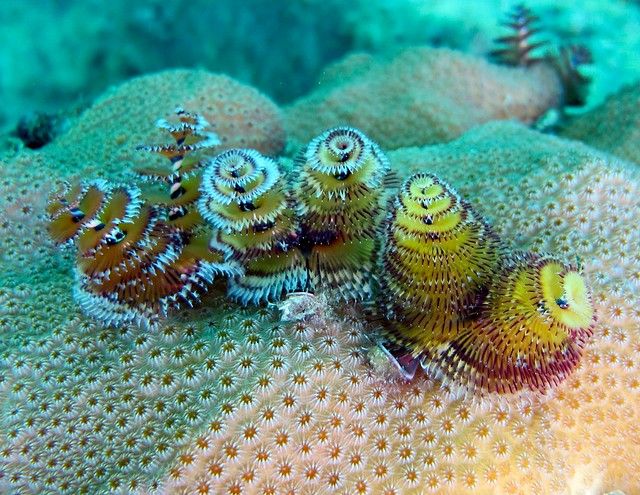Christmas Tree Worm Phylum

The food is then passed down a food groove by ciliary tracts lines of tiny hair like extensions on the surface of cells that generate water currents to move food or mucus.
Christmas tree worm phylum. Marine bio midterm 1. The phylum annelida is defined by its morphology as segmented worms. Class polychaeta class clitellate and class echiuran.
Each spiral is composed of feather like tentacles which are heavily ciliated. These christmas tree structures are actually specialized mouth appendages. These animals can be a variety of colors including red orange yellow blue and white.
They express closed circulatory systems in the same fundamental manner that homo sapiens do. These organisms have a indirect biphasic lifecycle. The hammerhead worm is one of only a very few terrestrial invertebrates known to produce the neurotoxin tetrodotoxin.
Annelids are categorized taxonomically into many classes. Christmas tree worms are sedentary tube building polychaetes from the phylum annelida and exist almost exclusively on large stony brain corals and porites filter feeding on microplankton. These appendages trap prey and transport the food straight towards the worm s mouth.
The rest of the worm s body is in a tube in the coral which is formed after the larval worm settles on the coral and then the coral grows around the worm the worm s legs parapodia and bristles chatae. Christmas tree worms are heterotrophic and with an obligate relationship with species of coral. They thrive best above 30 meters in tropical oceans worldwide from indo pacific regions to the caribbean but they rarely grow much taller than one inch.
This means that there are two phases that complete the lifecycle. The christmas tree shape shown in the image is the animal s radioles which can be up to about 1 1 2 inches in diameter. Common organisms in the class clitellate include oligochaeta earthworms and branchiobdellida ad hirudinea leeches.


















